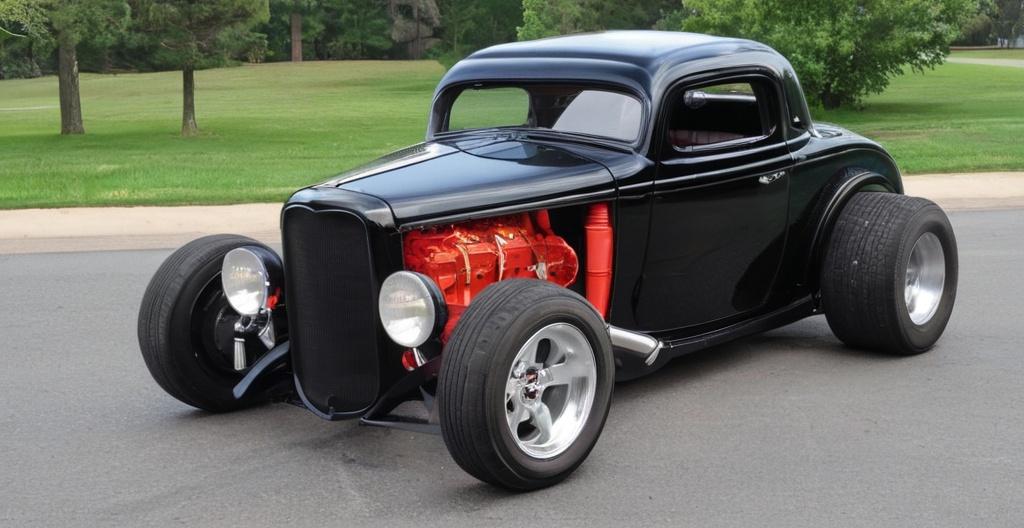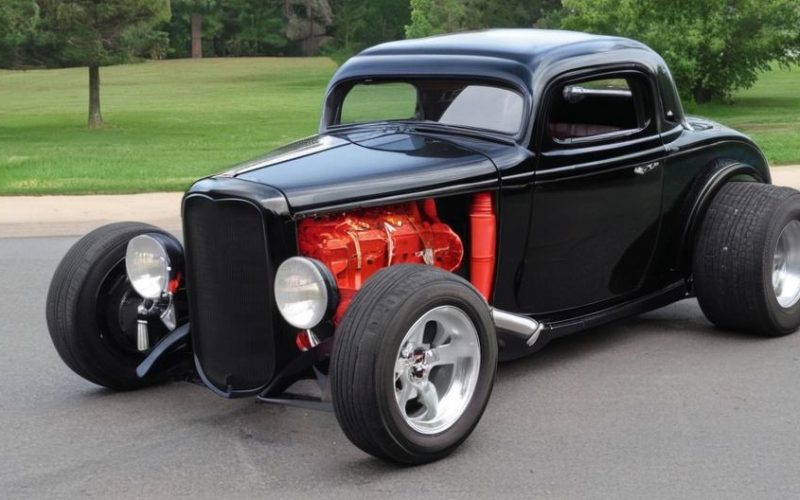Key Take Aways About The Role of Post-War Car Culture in Street Rodding’s Rise
“`html
- Street rodding emerged in post-war America, driven by economic prosperity and cultural shifts towards freedom and self-expression.
- Post-WWII surplus of vehicles and parts, combined with servicemen’s mechanical skills, fueled the hot rod movement.
- Owning a car became a symbol of freedom and personal identity in the post-war era.
- The 1950s and 60s saw street rodding as a form of artistic expression, paralleling cultural movements like rock ‘n roll.
- Street rodding stimulated the economy, creating demand for aftermarket parts and supporting a specialized industry.
- Today, street rodding blends nostalgia with modern technology, while the essential spirit of freedom and creativity persists.
- Future street rodding will likely incorporate electric vehicles, AI, and sustainable materials, but the core values will remain.
“`

The Rise of Street Rodding: A Post-War Car Culture Explosion
Street rodding didn’t come out of nowhere. This phenomenon, an American tradition in its own right, emerged from the unique climate of post-war America. The end of World War II brought about a period of economic prosperity, coupled with a cultural shift towards freedom and self-expression. This context provided the perfect breeding ground for a new automotive hobby.
From Surplus to Supercharged
After World War II, there was a surplus of vehicles and parts in the United States. Many servicemen returning home found themselves with money to spend and a newfound mechanical aptitude acquired during their service. These individuals began transforming surplus cars into something faster and flashier, fueled by a desire for speed and individuality. These post-war hot rods were a far cry from today’s polished machines, but they laid the groundwork for what would become street rodding.
Freedom on Four Wheels
Owning a car in the post-war era represented more than just having a means of transport—it was a symbol of freedom. With a car, the open road was yours to conquer. For young Americans, fixing up an old jalopy wasn’t just about speed; it was about carving out a personal identity. No wonder then, that when people talk about street rodding, they often speak of it as a lifestyle, not just a hobby.
Cultural Influence and Automotive Artistry
The 1950s and 60s saw the rise of street rodding as an artistic expression. Enthusiasts began heavily modifying their vehicles, making them unique in appearance and performance. Not just satisfied with fast cars, rodders turned their focus to aesthetics, blending performance with design. The introduction of custom paint jobs, chrome details, and unique interiors added an artistic flair to the world of street rodding. This movement paralleled other cultural phenomena of the era, such as rock ‘n roll and the counterculture movement, highlighting a collective desire for rebellion and self-expression.
Economic Impacts and Industry Growth
Street rodding also had significant economic implications. It created demand for aftermarket auto parts, giving rise to specialized manufacturers and shops catering to the needs of car enthusiasts. These businesses flourished by providing components, customizations, and services specifically tailored for hot rods and custom vehicles. The industry quickly recognized the buying power of rodders, which led to an annual wave of trade shows, exhibitions, and races, further solidifying street rodding as a viable market.
Nostalgia Meets Modern Innovation
Fast forward to today, street rodding has advanced considerably, blending nostalgia with modern technology. While the spirit remains rooted in mid-20th-century America, today’s rodders have access to a plethora of resources, from high-tech body kits to advanced engine tuning software. The evolution of car parts and technology has made it possible to build cars that not only pay homage to their predecessors but outperform them in every possible way.
The Future of Street Rodding
As we look to the future, it’s clear that street rodding will continue to evolve, shaped by both technological advances and cultural trends. Electric vehicles, artificial intelligence, and sustainable materials may start to appear within the scene, bringing new opportunities and challenges. However, one thing is certain: the core impulse that drove post-war rodders to soup up their rides—freedom, creativity, and the thrill of speed—will never change.
Street rodding is more than just a tribute to automotive history; it’s a living, breathing culture that continues to adapt and inspire. As long as there are roads to ride and minds to ignite, street rodding will keep on truckin’, reminding us all of a time when cars were more than just vehicles—they were a way of life.
